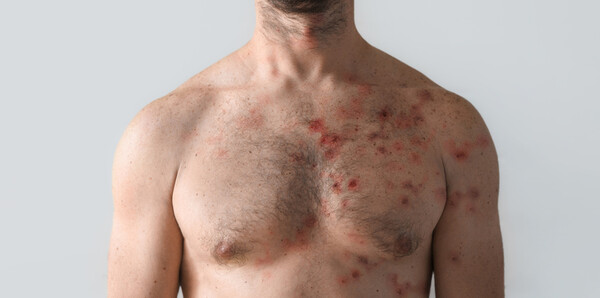The number of mpox cases in Korea went up by 17 from Monday last week to Sunday, bringing the total number of confirmed cases to 47.

According to the Korea Disease Control and Prevention Agency (KDCA), five cases were added between Friday and Sunday.
By region, among the five cases, three were confirmed in Seoul, one in South Chungcheong, and the other in Busan.
Four of the cases were self-reported to the KCDA's call center (1339), and the remaining one was reported by a medical institution.
The main symptoms of the new cases included rash and fever, and all five patients are reportedly in good general condition, officials said.
They have no history of overseas travel within the past three weeks and have been exposed to infection risks such as close contact in the country, suggesting a domestic outbreak.
Since the first presumptive community transmission case occurred in the first week of last month, authorities have been actively publicizing the symptoms of mpox and encouraging patients to report their symptoms.
"We have enough vaccines, treatments, and diagnostic capabilities for mpox," KDCA Commissioner Jee Young-mee said. "We urge people with suspected symptoms to visit their nearest medical institution or public health center for testing and treatment."
Jee also stressed that the quarantine authorities are thoroughly protecting the personal information of those who report suspected symptoms of mpox.
As mpox infections continue to increase in Korea, KCDA has decided to disclose the status of daily mpox cases at 10 a.m. on weekdays, on its website.
Mpox is an acute, febrile, rash illness caused by a viral infection. It is endemic in central and west Africa but has spread to other parts of the world since May last year. Most cases resolve after two to four weeks, with a reported fatality rate of less than 1 percent.
Mpox is typically spread through sexual contact, particularly between men who have sex with men, as well as through contact with skin lesions.
Related articles
- Korea confirms 10 additional mpox cases since Friday
- Developers of mpox diagnostic kits, vaccines receive attention as mpox spreads in Korea
- Korea confirms 9th mpox patient with no history of overseas travel
- Korea confirms 3 new mpox cases in less than a week
- Government to expand mpox vaccination to sexual minorities
- Korea's mpox caseload increases to 60
- Korea's mpox caseload increases to 81
- Korean mpox cases exceed 100, a year after 1st case

